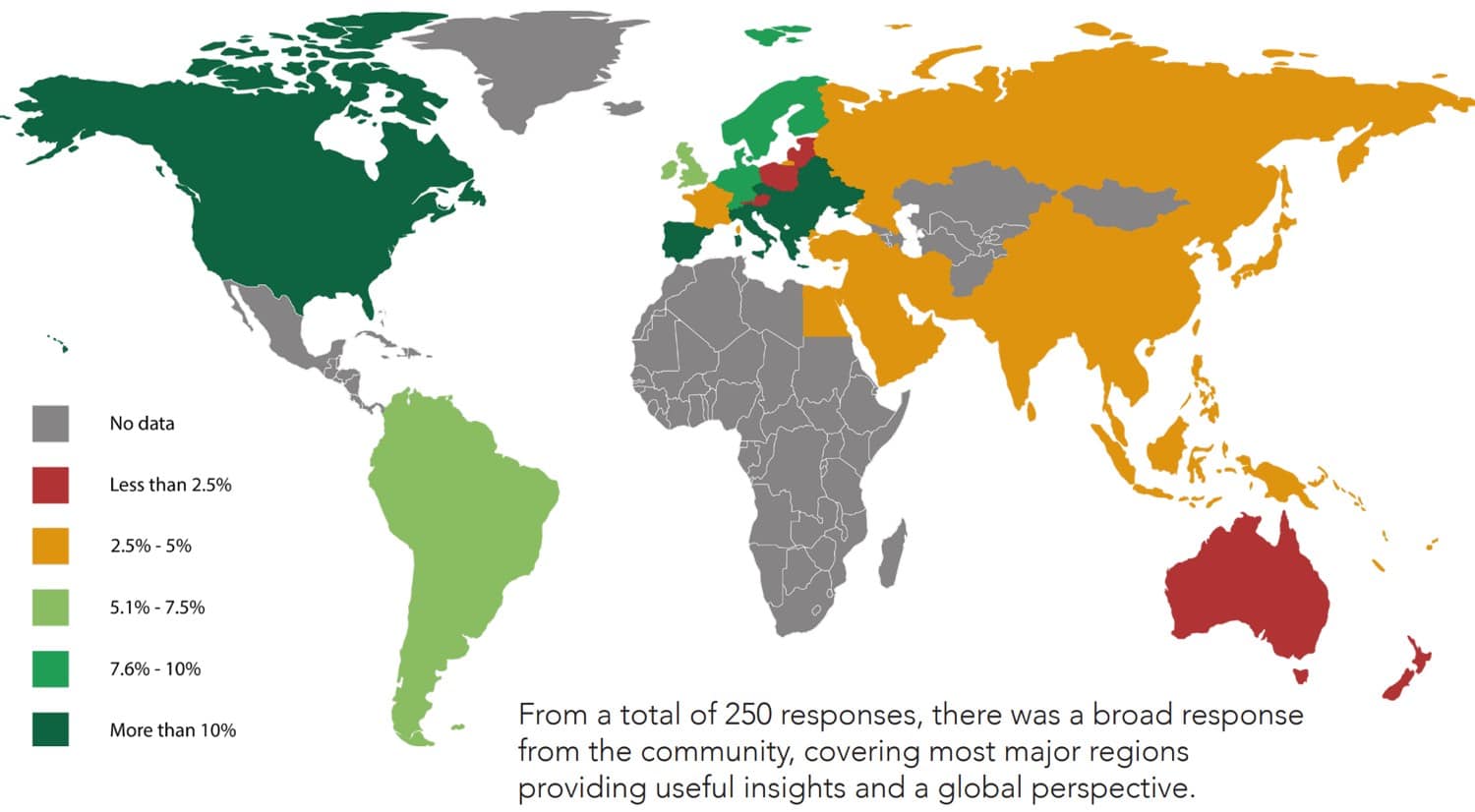Construction industry looks to BIM to improve decision-making, collaboration: Survey

Many architecture, engineering, and construction (AEC) firms see building information modeling (BIM) as important to enabling better decision-making and team collaboration at all stages of a project, new research shows.
The buildingSMART International survey, titled “Understanding the Role of BIM and CDEs Today and Expectations for the Future,”also found that more than three-quarters (77%) of respondents regard a common data environment (CDE) as the most effective way to exchange large amounts of information, and that more than half of surveyed organizations (53%) have increased their use of cloud solutions for project management in the past two years.
Nearly half of the survey respondents report that BIM is used on between 76% and 100% of their projects, with almost a quarter (23%) reporting that all of their projects incorporate BIM processes.
“BIM is continuing to expand from design and build into downstream phases of the project lifecycle such as handover, operations and maintenance, and even decommissioning and reuse,” the bSI report notes.
According to the survey, the top three reasons organizations use BIM are:
- Faster way to capture/resolve quality issues and eliminate clashes (65%)
- To facilitate a collaborative project environment between all stakeholders from project inception to closeout (63%)
- Improved understanding/visibility of design decisions (63%)
In addition, more than half (51%) identified reduced design and construction costs as driver, while 63% cited improved understanding/visibility of design decisions.

Asked to name the leading processes that are optimized for BIM within their organization, 85% of respondents cited 2D/3D design coordination, while clash detection and quality checks were named by 72%, and design review/approval and file sharing both came in at 54%. The bSI report also notes that survey data indicates growing adoption of openBIM workflows.

The survey was conducted as part of the buildingSMART Virtual Summit held in October 2021, and a total of 250 responses were collected. Most responses came from AEC organizations, with other categories―clients and asset/property managers―accounting for less than 12% of responses. Noting that most of the survey respondents are responsible for managing or leading BIM at their organizations, buildingSMART International said “the results show that BIM managers and leaders (on the whole) are focused on providing value for the full CAPEX of projects and assets.”
Benefits of BIM
Asked how using BIM helps their organization the most, respondents named better decision-making (71%), improved quality (71%), and improved/faster collaboration (70%) as the top benefits. Other high-ranking improvements included increased transparency (57%) and reduced inefficiencies (49%).
"The survey shows the breadth, adoption, and benefits of BIM throughout the entire lifecycle of projects and assets."
—Aidan Mercer, marketing director, buildingSMART International
In terms of how they see BIM helping most in the future, more than three quarters of respondents cited reduction in errors/improved quality (77%). Other common responses were digital twin (66%), automation (64%) and cost reduction (52%).
“This survey has some encouraging findings from a global audience,” says Aidan Mercer, marketing director, buildingSMART International. “It shows the breadth, adoption, and benefits of BIM throughout the entire lifecycle of projects and assets. As we can see from the results, BIM continues to add value in many areas as do CDEs. This combination is critical for collaboration and coordination to provide tangible results and creates confidence amongst stakeholders. We are also encouraged by the role of openBIM®, which shows the growing demand for open data standards.”
CDE and data sharing
More than three-quarters of respondents reported using a CDE/collaboration platform to share and exchange large amounts of data with other teams in their daily work, with the cloud enabling this approach.
There appears to be a move to cloud infrastructure, with respondents noting this was a “major shift in their focus and delivery. This confirms the importance of CDEs in enabling the digital transformation for many different organizations.”
Under the current time and quality pressures, professional collaboration and coordination of the different trades and disciplines needs reliable solutions, says Frank Weiss, senior director, new products, BIM and innovation, Oracle Construction and Engineering.
“It’s impressive to see the strong confirmation and evidence about the importance and value of CDEs in projects,” Weiss says. “A deep and seamless integration of CDEs with authoring and validation products, but also exchange to complementing solutions will simplify the day in a life of the users.”
As one example, the new openCDE Doc API will support highly secure machine to machine data exchange that’s simple for users, Weiss adds.
“Oracle is committed to open standards and we are proud to contribute actively in specific open standard developments for higher value of market professionals,” Weiss says.
Europe and the Americas provided the bulk of the responses for the survey, which was developed in collaboration with Oracle Construction and Engineering. Organizations of all sizes were represented, though those with more than 500 employees made up the largest proportion, and around three-quarters served both private and public sector clients.
Credit: Rick Bell Senior Content Marketing Manager Oracle Construction and Engineering
